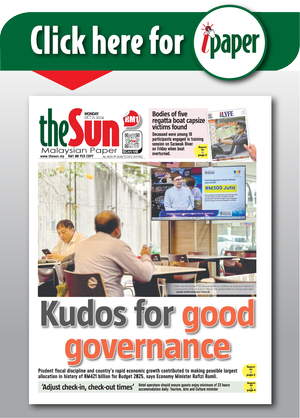KUALA LUMPUR: Malaysia’s creative industry micro small and medium enterprises (MSMEs) need consistent, targeted support to reach their full economic potential, said creative economy veteran Zainariah Johari.
She said artisans and small creative businesses form the backbone of the sector, yet are often overlooked in favour of big players.
“The most important thing is the quality of our creative ecosystem, and, in my view, the real strength comes from creative MSMEs. Yes, there are big players like Les’ Copaque and Animonsta, they are successful. But the majority of the industry’s movers are small businesses that form the backbone of this ecosystem,“ she told SunBiz.
Zainariah noted that the creative industry has historically contributed less than 2% to the country’s gross domestic product, with the most recent figure she has seen at 1.97%.
“That is a relatively small slice of the overall economy. But our potential is far greater than that,“ she said.
Citing Kelantan’s world-class silversmiths, she questioned why their work is not promoted internationally.
“If we do not support them, these skills will disappear just like Mak Yong and other crafts that have already moved to Singapore for better opportunities. Malaysia risks losing not just individual talents, but whole segments of our cultural heritage,” she warned.
Zainariah expressed deep concern over Malaysia’s artistic and cultural heritage and called for skill gap mapping to better target support.
“We must identify those with high potential but weak management capabilities and help them build sustainable businesses.”
Zainariah, who recently completed her two-year contract as CEO of MyCreative Ventures Sdn Bhd, said one of the biggest challenges during her tenure was the lack of business discipline among grant and funding recipients.
“Many creatives are talented but lack the skills to manage operations or grow their businesses sustainably,” she said, adding that grants or loans without proper monitoring rarely translate into long-term growth. “Otherwise, we risk losing many creatives who are talented but do not know how to build a business.”
She said that in chasing artificial intelligence and new technology, the country must not forget the hard work and human uniqueness that machines can never replace.
“Machines can never replace handiwork, fine arts and the values embedded in them. Large grants often go to big organisations, while smaller artisans, the heartbeat of our heritage, struggle to survive.”
Zainariah believes Malaysia still has the potential to be a regional creative powerhouse, noting that the country began developing its creative industry earlier than South Korea but lacked consistency.
“We have good infrastructure and support, but when there is a change of government or policy, programmes often get disrupted.
“In Indonesia, even with weaker infrastructure, they have persistence and long-term focus in developing local talent and content. Thailand leverages its cultural heritage like Muay Thai to promote globally, whereas in Malaysia, we are still not focused on marketing our heritage assets,” Zainariah said.









